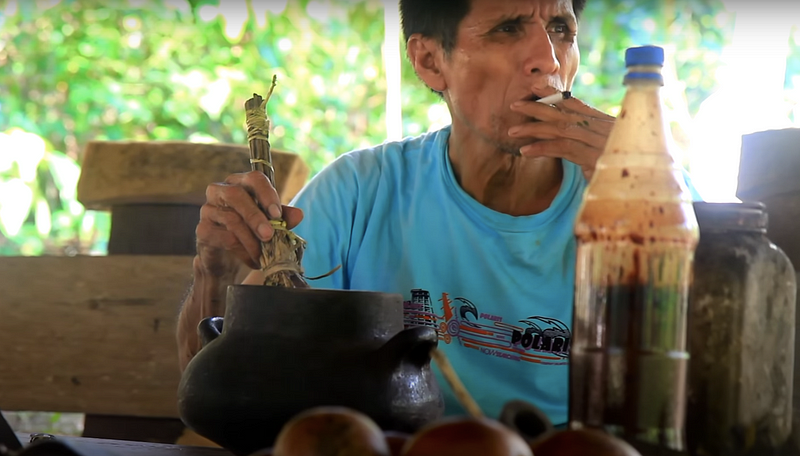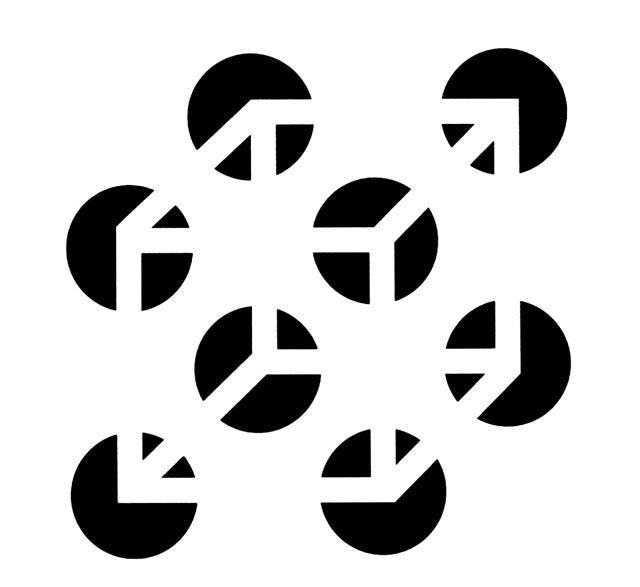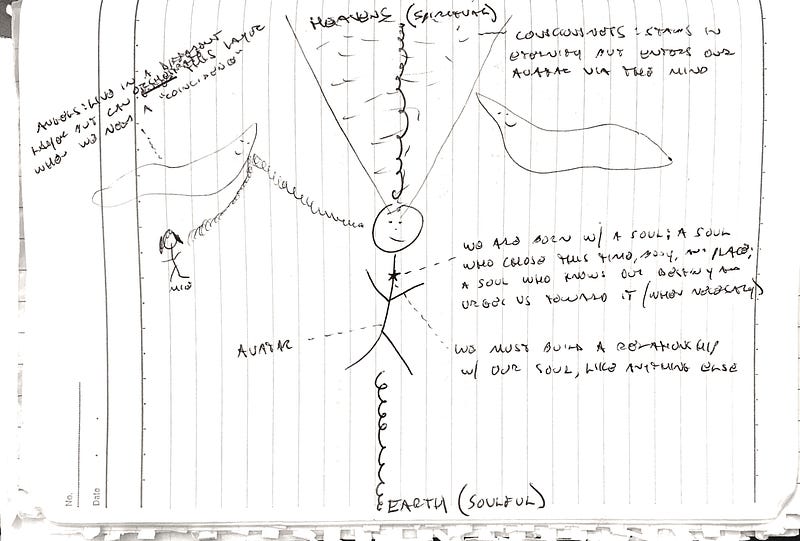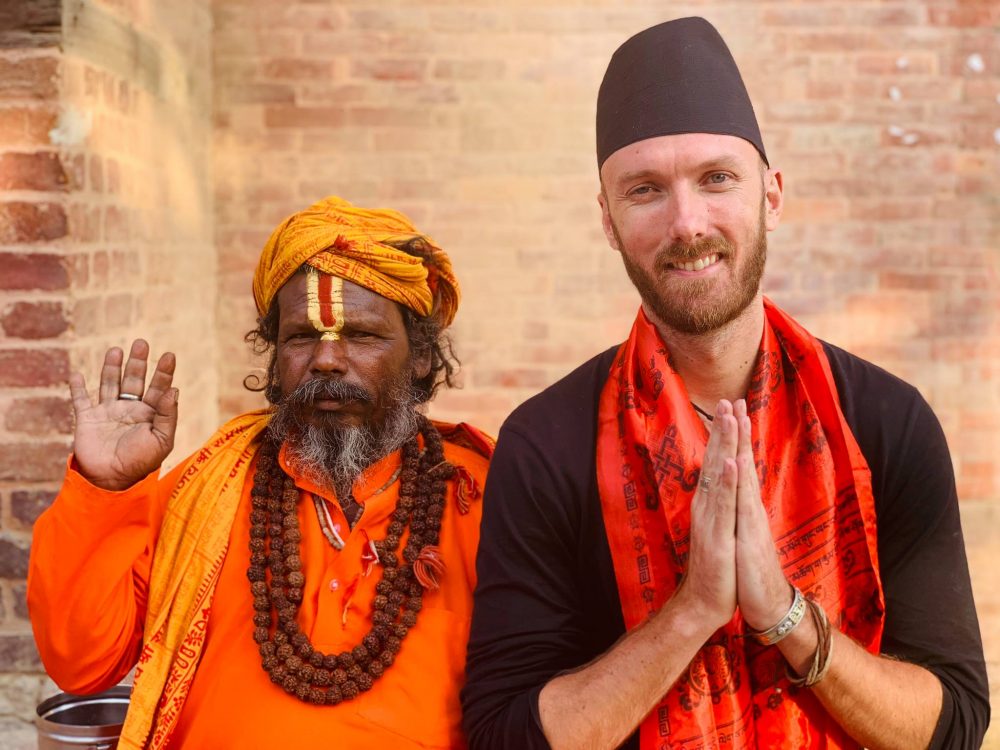With one quick exhale the shaman blew out the remaining candle and we were left sitting in the deep darkness of the Amazon with nothing but the moon and stars to illuminate our surroundings.
I smiled, took a slow, deep breath, and closed my eyes.
When I opened my eyes I found the French girl in our group lying in the fetal position at my feet, in the dirt, crying uncontrollably as she pulled at her hair. The contrast of her starch white nightgown rolling around against the dark-colored dirt and leaves of the Amazon floor left me unsettled.
Straight across from me a younger man from Spain lay humped over the bench, vomiting so violently I could barely hear the airplane engine flying overhead. I wasn’t sure at first, but as I listened more intently I noticed that he was indeed whistling an eerie tune in between the violent vomiting outbursts. He seemed to be possessed.
Behind me, a middle-aged man had stumbled further out into the bush, though the volume of his moans and intermittent vomiting left a haunting tone over the already haunting surroundings.
The moon outside was full, and as dark clouds rolled over and thunder began to roll, I knew we were in for a long evening.
I have often found that the greatest life adventures are those that occur spontaneously. You didn’t plan for it, you didn’t research it, you had no expectations for it. The adventure just found you.
That’s how my story began with ayahuasca.
I didn’t go looking for ayahuasca.
Ayahuasca came looking for me.
What is ayahuasca?
Ayahuasca is an herbal drink made from plants that grow in the Amazon jungle. It is notorious for its psychedelic properties and has been used in Amazonian shamanic rituals for hundreds of years.
The drink itself is made by mixing the leaves of one plant (Psychotria viridis) with the vine of another (Banisteriopsis caapi), both of which have hallucinogenic properties that are attributed to the chemical compound DMT (N-N-dimethyltryptamine).
Traditionally, a shaman — an experienced healer who leads ayahuasca ceremonies — prepares the brew by boiling the torn leaves of the Psychotria viridis shrub with stalks of the Banisteriopsis caapi vine in water.
When the brew has reduced to the shaman’s liking, the water is removed and reserved, leaving behind the plant material. This process is repeated until, in the end, you have a highly concentrated liquid that tastes just like a frog in a blender.
Thirsty yet?
What happens when you drink it?
What could possibly inspire people to voluntarily consume a beverage that tastes like blended frog guts?
Well, it just so happens that when consumed, this concoction has the profound ability to send people to corners of their consciousness never before visited.
The drink causes profound hallucinations and is said to have spiritual and therapeutic benefits. It’s been used in healing ceremonies throughout South America for centuries and it is perhaps no surprise that, in recent years, it has also attracted the attention of Western medicine as a possible treatment for depression, anxiety, addiction, and many other severe psychological conditions.
Researches believe it may have been originally used as a purgative to induce violent vomiting as a form of cleansing.
So it has that going for it.

What did I see?
After drinking my cup of dark brown ayahuasca brew, I sat on a wooden bench in front of the shaman, together with the other group members (there were 7 of us), and waited. It normally takes 30–45 minutes before you begin to feel the effects of the drink.
The effects last anywhere from 4–6 hours.
When the effects kicked in, it felt as if a small group of people (I’ll refer to them as spirits) came and picked me up to take me on what felt like a tour.
They seemed to be saying, “Come. Let us show you our world.”
The experience was akin to the way you might move your way through a museum — room to room, painting to painting, scene to scene. Embedded in each scene were deeply personal lessons that the spirits were pointing out to me — but not with words. They communicated with me directly, through telepathy.
The words and messages they wanted to communicate to me simply appeared in my mind — in an instant — no different than the way a thought pops into your head.
So what exactly did I see?
For the first time, I am going to share some of these scenes publicly.
Here are a few of the specific experiences I had during my time with ayahuasca. These are copied directly from my journal entries.
- I smile or say something kind to a little girl who then smiles with joy and I feel her joy as if it’s my own; and as her joy increases, the plants and trees around her grow larger, and I seem to understand that it’s these moments of joy that somehow fuel and grow the world around us.
- An aggressive man is harassing me — up close — and I seem to understand that this is a lesson in dealing with confrontation. I am unscathed and unshaken, merely observing as people in the background yell (cheer?) for me to do something. I can sense that they’re encouraging me and I’m glad. I vomit in this reality (real world) and watch as the vomit lands in that reality (ayahuasca world)right on the shoes of the man yelling at me. I smile and laugh out loud – “Take that!” I voice to myself.
- I come across a good friend of mine. He is wearing his bright smile as always. When we shake hands I become his wife, his friend, his brother…I become him, and he becomes me. Not only do I see this but I feel it. I feel what it’s like to be all these people in relation to him. And in an instant, it’s over.
- A young indigenous boy runs around a creek and up onto a bridge as hundreds of supporters move in behind him, showing their support. He’s holding a weapon — a club — and he is (or wants to, or is ready to) standing up for something.
- I am at a massive gathering of people who are all, like me, seeking the “truth.” Everyone there is looking in the opposite way that I am, seemingly in awe, and a voice is telling me, “This is what you wanted, right? This is what you’re after? Well…look.” As I glance behind me there is the brightest, largest, purest white light one could imagine. I can just barely make out the shape of a giant figure but nothing more. I don’t look long — I just glance — and then the scene ends.
- I feel air blowing on my ear (in this waking life reality). I see a little girl on some kind of stationary bike in a basement who, when she peddles, produces blow the wind that’s blowing on my ear.
- I am gathered together with many of the spirits I’ve seen throughout my trip. We are outside a normal looking home in the countryside and we are saying goodbye, shaking hands and hugging as it seems that it’s time for me to go (I sensed that this meant the ceremony was ending soon, which it did). Shortly after this scene, my trip ended and I was seemingly transported back to my bungalow in the Amazon.
What did I learn?
As you can imagine, there’s a lot to process with an experience like this. It takes time to process the experience, and it also takes time to process the lessons that are there for the taking.
Here are some of the lasting insights I have taken away from my journey.
This is not just a hallucination
Well, it is a hallucination. But it’s not just a hallucination.
Let me explain.
I, like many, had always been inclined to drive a wedge between reality and hallucination. My belief was that reality is, well, objectively real, and hallucinations are not. Yet there was a realness about the ayahuasca experience that was far beyond any dream or intoxication or “trip” that I’ve ever had before. In fact, my experience felt no less real than my normal life experience. So I started digging into the latest science of perception.
According to Anil Seth, a neuroscientist and director of the Sackler Centre for Consciousness Science at the University of Sussex, what we call reality is actually “just a bunch of hallucinations that we all agree on.”
Our reality is a hallucination!
Seth explains:
“All perceptions are acts of interpretation. They’re acts of informed guesswork that the brain applies when it encounters sensory data. I think the way I can think of this is that there is no light in the skull, and there are no sounds. All that’s going on in the brain are electrical impulses whizzing around in complex patterns. And out of all this — all this pattern-making in the brain, a world appears.”
Take a look at the image below.
What do you see?

You think you see a six-sided cube in the image below. But there is no cube there. There are not even squares there. There are just black circles with chunks missing. Your brain hallucinates the rest.
According to Seth, hallucination is uncontrolled perception, and perception is controlled hallucination.
What does this mean for the profound experiences discovered through ayahuasca?
One conclusion we might draw is that the active DMT found in ayahuasca broadens our perception, letting in more sensory data and allowing us to experience a reality that is less restricted from the one we’re used to.
It’s not about which world is more real than the other — it’s about how much of all the stuff “out there” in the universe we are able to experience.
Regardless of which explanation we choose, what I have personally realized is this: it doesn’t matter.
What matters is that I had an experience, and the impressions that this experience left on me are no less real than any experience I’ve ever had in what we call our “waking life.” Like a dream that moves you, or teaches you, or scares you, the impact that’s left is very real.
“There is a longing in each of us to see beyond what our usual sight tells us.”
There is a sacred, mystical, and mysterious aspect of life that should and will most likely always exist. We should respect this mystery and not undermine it with incessant logic — futilely trying to squeeze something so large and so grand into the tiny, narrow tube of reason.
More on that below.
Multiple realities in multiple dimensions
I met a lot of spirits throughout my journey. There were my “tour guides” and there were many others. What was interesting was that these weren’t people I knew — eg, they weren’t memories. I seemed to be traversing a world different from this one and meeting people I’d never met before.
“The spirits may not be invisible at all, but only seem so because of our doctrinal blindness. Is it their nature or our vision that defines them as invisible?”
In her new book, Knocking on Heaven’s Door, Harvard University theorist Lisa Randall explores how physics may transform our understanding of the fundamental nature of the world.
“There could be more to the universe than the three dimensions we are familiar with. They are hidden from us in some way, perhaps because they’re tiny or warped. But even if they’re invisible, they could affect what we actually observe in the universe. There are lots of things we cannot see with the naked eye that turns out to be based in reality.”
It could be that the spirits I was engaging with, and the world that I was traversing, exist simply in another dimension.
American astrophysicist Neil De Grasse Tyson, explains in a three-minute clip below how the concept of a 4th dimension sounds absurd to us, yet mathematically it is entirely plausible [start video from the 6’40” mark].
The universe is benign
What I truly felt with ayahuasca was a warm, benevolent, compassionate energy. I felt the extreme presence of some kind — buzzing around — and I knew that presence to be helpful, benevolent, and encouraging.
I’d look over every scene they put in front of me and I would try to pinpoint the insight that I knew was in there. I’d get excited and jump to conclusions, “Oh! So that means this?! Oh wait, so you’re trying to teach me this…right?!”
They would look at me patiently and smile, as if to say “Now, now, boy. All in due time.”
I encountered the faces of countless mothers and children — often smiling, and laughing. Always calm, strong. They did not speak, yet both communication and understanding took place. I know that they were trying to teach, though their teaching style is mysterious, profound, thought-provoking, seemingly respecting the mystery of the universe and not simply coming out and expressing the lessons in language. It seemed likely that this is because the lessons to be learned are beyond language; that the spirits understand the limits of language and so they teach through broader, more open, and profound ways.
The warmth and benevolent energy of the ayahuasca shed light on the majestic beauty of everything around me: the nature, the shaman, the other group members, the animals. Externally, I saw everything as perfect and beautiful. Internally, I was flooded with joy, rapture, and peace. These feelings were very much real, and I felt eternally grateful for them.

It was interesting talking to the other members and hearing about their own experiences. Where my visions were filled with women and children, another member’s visions were filled with animals and energy. Many of us shared in the experience of blissful rapture, warmth, benevolence, and a profound sense of connectedness.
Interestingly, the majority of us all shared one particular phenomenon: a sublime sense that while he sang the icaros (spiritual songs), our shaman was moving slowly around the room in a circle.
The sound of the icaros started far away, came closer as he approached each one of us, and then moved far away again. One member of our group even felt the shaman blow air on his forehead.
And yet when we opened our eyes — at any point during the ceremony — the shaman was sitting in his chair at the front table, often with his forehead down on the table.
He had never moved.
Life beyond reason
With each additional drinking session (I attended four), I began to see the reality of this experience more clearly. Namely, that there really is something here; something profound to be learned.
And though I am inclined, as per my culture, to wrap everything up in logic, solely with the mind, I have begun to see the limiting nature of logic.
Logic is, in fact, a reduction, and to think that we can understand all aspects of our universe via the intellect is ambitious at best, arrogant at worst.
We are, in fact, more complicated than simply one-dimensional intellectual beings. We have the ability to understand things beyond logic, beyond language, and if ayahuasca taught me anything it taught me this truth.
“The creation myth of random events in unimaginable space keeps the Western soul floating in a stratosphere where it cannot breathe.”
I noticed that the more I tried to intellectualize the scene in front of me the more the scene seemed to fade. The more I let go, the more it flourished.
The father of modern psychology, William James, writes in his 1902 work, The Varieties of Religious Experience:
“Nevertheless, if we look [at our] whole mental life as it exists…we have to confess that the part of it which rationalism can give an account is relatively superficial. It is the part that has the prestige undoubtedly, for it has the loquacity, it can challenge you for proofs, and chop logic, and put you down with words.”
But there’s a part of our psyche far superior to rationalism.
“Your whole subconscious life, your impulses, your faiths, your needs, your divinations, have prepared the premises, of which your consciousness now feels the weight of the result; and something in you absolutely knows that that result must be truer than any logic-chopping rationalistic talk, however clever…”
Both during and after my time with ayahuasca I notice that if I stay entirely open — if I create a space to simply receive — and if I resist the oppressive tendencies of rational analysis, what I find is larger, grander, more profound experiences with lessons that I can understand only by focusing on what I intuit, and not as much on what I think.
“The unreasoned and immediate assurance is the deep thing in us, the reasoned argument is but a surface exhibition.”
William James
I know because I feel, not because I think.
The past is not gone
At one point during my journey, I visited my 9-year-old self.
I was with my mother, and we were in the driveway getting ready to drive to McDonald’s to get a sundae — a little ritual of ours whenever I was having a bad day.
But this wasn’t just a memory. I was THERE, not just observing the scene from the outside but experiencing the scene from the inside.
My 9-year old self noticed that I was there and he said hello. I said hi to him and hi to my 43-year old mother as well. They didn’t seem surprised to see me.
“We’re still here,” they explained to me. “We’re not gone. We never went away. We’re right here, in a different dimension that is hard for you to access.”
What would have normally seemed incomprehensible made all the sense in the world to me in that moment.
Of course they’re not gone. How could they be?
It’s not as if everything we experience today just gets erased the moment we experience it. It must still exist somewhere.
Here’s how I see it: think of an electric pencil sharpener. As you stick the tip of the pencil into the sharpener, shreds of the pencil split off into the machine.
When you take the pencil out, the shreds of pencil are gone.
Or are they?
They’re actually just out of sight. But they’re very much still there.
The tip of the pencil, in this example, is the present moment. In each present moment, we are sticking the tip into the machine. Just as quickly, those moments are being shredded off, falling out of sight, such that all we can ever see is the tip of the pencil.
But like the shreds of pencil left in the sharpener, every moment we’ve ever experienced is left somewhere.
The 9-year old Ryan and the 43-year old Mom are not gone. It’s not that they were once here and now they are gone, lost to the past. They are still very much alive; they are just living in what I can only describe as another dimension.
I have since done some digging around on this topic and came across a fascinating article written in 2015 by an MIT Professor, Brad Skow, titled, “Does Time Pass?”
Professor Skow explains that “time should be regarded as a dimension of spacetime, as relativity theory holds — so it does not pass by us in some way, because spacetime doesn’t. Instead, time is part of the uniform larger fabric of the universe, not something moving around inside it.”
Essentially, events do not “sail past us and vanish forever; they just exist in different parts of spacetime” such that “the experiences you had a year ago or 10 years ago are still just as real, Skow asserts; they’re just “inaccessible” because you are now in a different part of spacetime.”
Now in a new book, “Objective Becoming,” published by Oxford University Press, Skow details this view, which philosophers call the “block universe” theory of time.
Ayahuasca, it would seem, has the unique ability to move us around to different parts of spacetime.
Keeping the invisible alive
The challenge with any profound, spiritual experience, is to find a way to hold strong to the experience as one moves back into the real world — back into a rational, reductionist society that increasingly believes that if you can see it, touch it, or measure it then it doesn’t exist.
What was it, in the end, that I took away most from my time with ayahuasca?
Awe.
In the end, what has stayed with me is a profound sense of awe for what it means to be human, for what it means to exist in this world in which we still know so little about.
There is most certainly more than meets the eye. We must do what we can to keep the invisible alive:
“Visible life is sustained so long as there is invisible backing, so we must learn not to forget the invisibles, through rituals, knocking on wood, rabbits foot…keeping the invisibles in the mix.”

